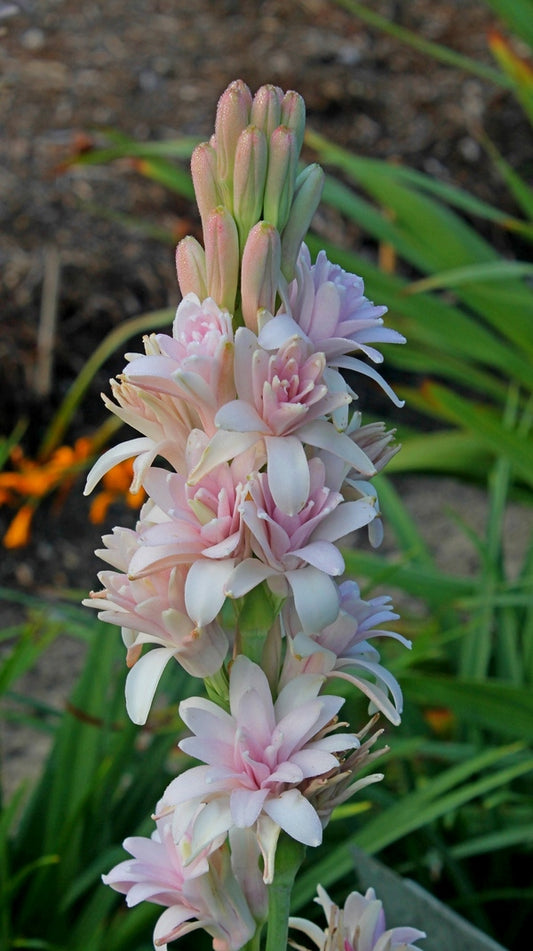The powerful fragrance of Polianthes tuberosa flowers has been cherished in Mexico since the time of the Aztecs and the flowers have been grown for the Mexican cut flower markets for over 500 years.
-
Polianthes x bundrantii 'Pink Sapphire' PP 26,460
Item #: 12279
Zones: 7b to 10b
Dormancy: Winter
Height: 36" tall
Culture: Part Sun
Origin: Hybrid
Pot Size: 3.5" pot (24 fl. oz/0.7 L)
Regular price $24.00Regular priceUnit price per
More Information About Polianthes
Polianthes is a genus of 17 species that are closely related to agave, hyacinth and yucca. All polianthes species are native to the cool mountain valleys of western and northwestern Mexico. One species (Polianthes tuberosa) is extinct in the wild but is widely cultivated as a landscape plant, for making Hawaiian leis, and for use in the perfume industry and cut flower trade.
The powerful fragrance of Polianthes tuberosa flowers has been cherished in Mexico since the time of the Aztecs and the flowers have been grown for the Mexican cut flower markets for over 500 years. Spanish conquistadors exported the flowers to Europe in the 1590s (where it was called "Hyacinth of the Indies"), and from there Polianthes quickly spread worldwide. Today, Polianthes tuberosa is grown as an economically important crop in India and France, and the floral extracts are some of the most expensive flower oils used in the perfume industry. The scent is said to be jasmine-like, very sensual, and in India the essence is known as "Mistress of the Night".
Polianthes species and hybrids have flower colors that include white, pink, orange, yellow, red, purple. Some species also have striped blooms. The flowers are always produced in clusters along a single stem and the flower size varies by species. The flowers of most polianthes species are nocturnally fragrant and bloom from mid to late summer. Hummingbirds love the flowers almost as much as gardeners do.
Polianthes (Tuberose) Growing Conditions
In the wild, Polianthes species vary in habitat from moist swampy areas to dry oak forests. However, in the garden, full to part sun, rich, well-drained, well-mulched soil, and medium amounts of water will provide excellent results. Locate the plants in sites where the evening fragrance can be enjoyed.


